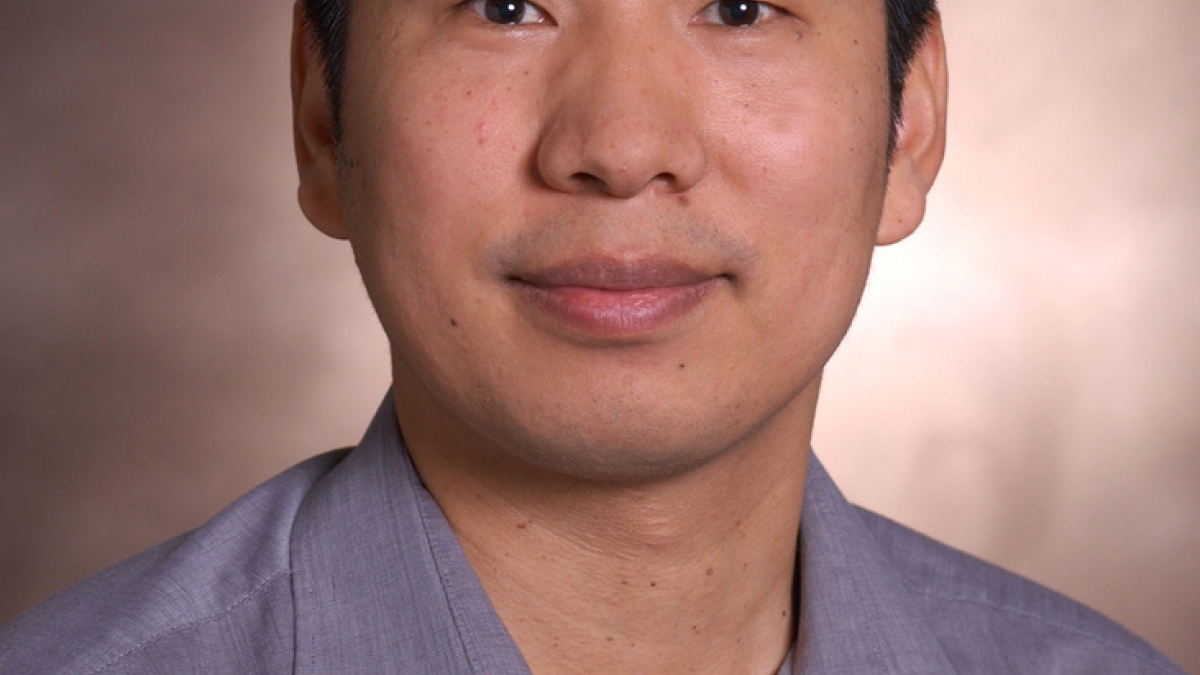Professor earns $6.25M research award from Department of Defense

ASU professor Hao Yan, an innovator in the field of nanotechnology, has been selected to receive a five-year, $6.25 million basic research award under the Department of Defense’s (DoD) Multidisciplinary University Research Initiative (MURI) program.
The highly competitive MURI program will award a total of $155 million over the next five years for 23 research projects, subject to the availability of federal appropriations.
“The ability of ASU to successfully compete amongst the nation’s best researchers speaks volumes about the quality and recognition of Hao Yan’s innovative work and the talents of the research team he has assembled,” said ASU President Michael Crow. “His breakneck speed in developing new technologies may spark entirely new solutions in biomedicine and energy research.”
For the MURI program DoD divisions, including the Army Research Office, the Office of Naval Research, and the Air Force Office of Scientific Research, solicited proposals in 21 topics and received 251 white papers, which were followed by 78 proposals. Yan was just one of 23 scientists from across the country selected to lead a MURI project, which were selected based on merit review by a panel of experts.
“Now, with this award, there is a golden opportunity to expand our research in a new direction,” said Yan, a researcher the Biodesign Institute, who has risen rapidly through the academic ranks at ASU. In 2011 Yan was named as the inaugural Milton D. Glick Distinguished Chair in the Department of Chemistry and Biochemistry and has garnered international attention for his research achievements and recognition in top-tier research publications.
“Watching Professor Yan’s research program grow and develop over the past few years has been tremendously exciting, ever since he was first a new assistant professor,” said William Petuskey, associate vice president of Knowledge Enterprise Development and former chair of the Department of Chemistry and Biochemistry. “He and his group members have produced a rapid and constant stream of innovative ideas and patents, an extreme rate of first-rate publications, an impressive portfolio of new approaches to teaching and training, and an astounding rate of winning research funding.
"He is the embodiment of what ASU is doing as it reimagines and redefines its role in modern society," Petuskey added. "He has become one of the foremost academic leaders of his field.”
Yan’s research approach uses nature – in this case, DNA, the essential building block of all life on Earth – as the architectural underpinnings of a biomimicry approach to advance nanotechnology and ultimately build nano-scale devices.
“I am always very interested in designer architecture,” Yan said. “Every architect needs a set of design rules. In the past, we have developed a variety of novel or unique strategies to design arbitrarily-shaped 2-D and 3-D structures by pursuing applications of DNA nanotechnology and attaching nanoparticles, enzymes and proteins to make them more functional.”
Yan will lead an elite team of researchers to increase their understanding of the design rules of constructing 3-D artificial enzyme centers and ultimately build nano-scale devices that mimic important biological systems, such as important biochemical pathways implicated in diseases or energy conversion during photosynthesis. The research team draws on expertise across several scientific fields and includes fellow ASU co-investigators Neal Woodbury and Don Seo; Mark Bathe, of the Massachusetts Institute of Technology; William Shih, Harvard Medical School; and Nils Walter, University of Michigan.
“There are so many biochemical pathways available in nature, and nature is so complicated,” said Yan. “There are two main aspects of biochemical pathways: one to convert mass, the other to convert energy. We just want to grab some of the content and simplify it, and make it useful for our purposes.”
“We need a set of rules that will allow anyone in the field to be able to design an engineered biochemical pathway using a bottom-up approach, where we use the biochemical components of a cell as our building blocks to make new discoveries.”
The MURI program supports the research of teams of investigators whose backgrounds intersect multiple traditional science and engineering disciplines in order to accelerate research progress. Yan sees the award as a significant opportunity to build a strong research program in biomimetics and bio-inspired engineering at ASU.
“During the past 10 years, we have made a lot of progress and are getting closer and closer to making self-assembled nanomachines a reality,” Yan said.
Learn more about Hao Yan’s research accomplishments to date:
http://www.biodesign.asu.edu/news/new-dna-nanoforms-take-shape-
http://www.biodesign.asu.edu/news/using-living-cells-as-nanotechnology-factories
Joe Caspermeyer, joseph.caspermeyer@asu.edu
480-727-0369

